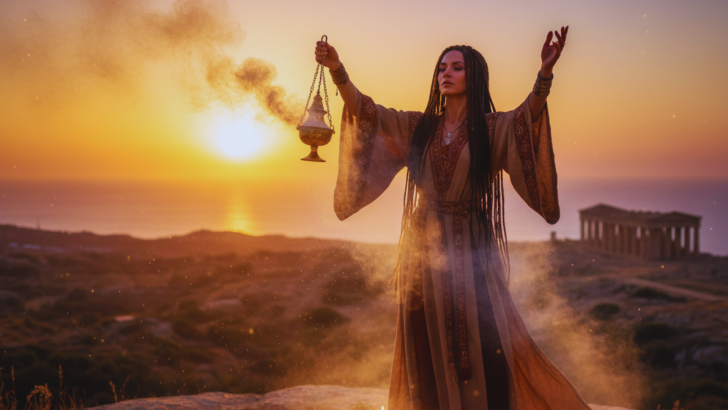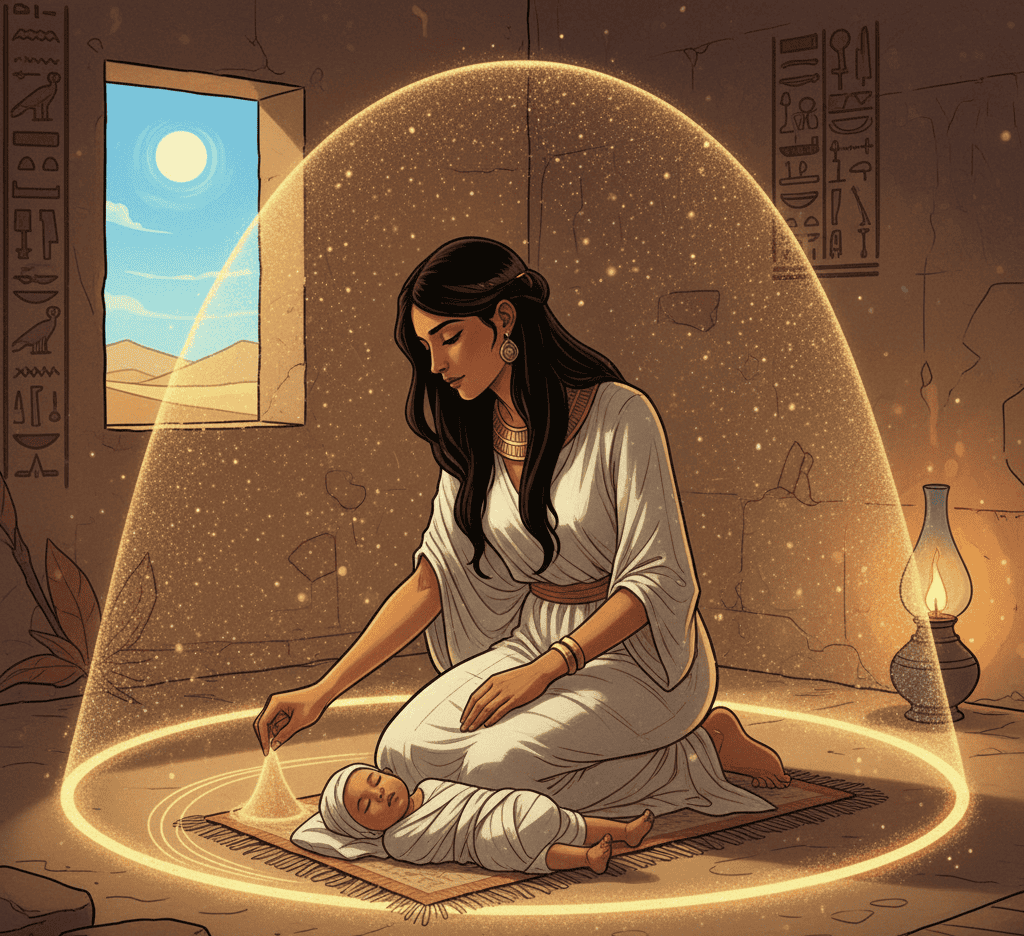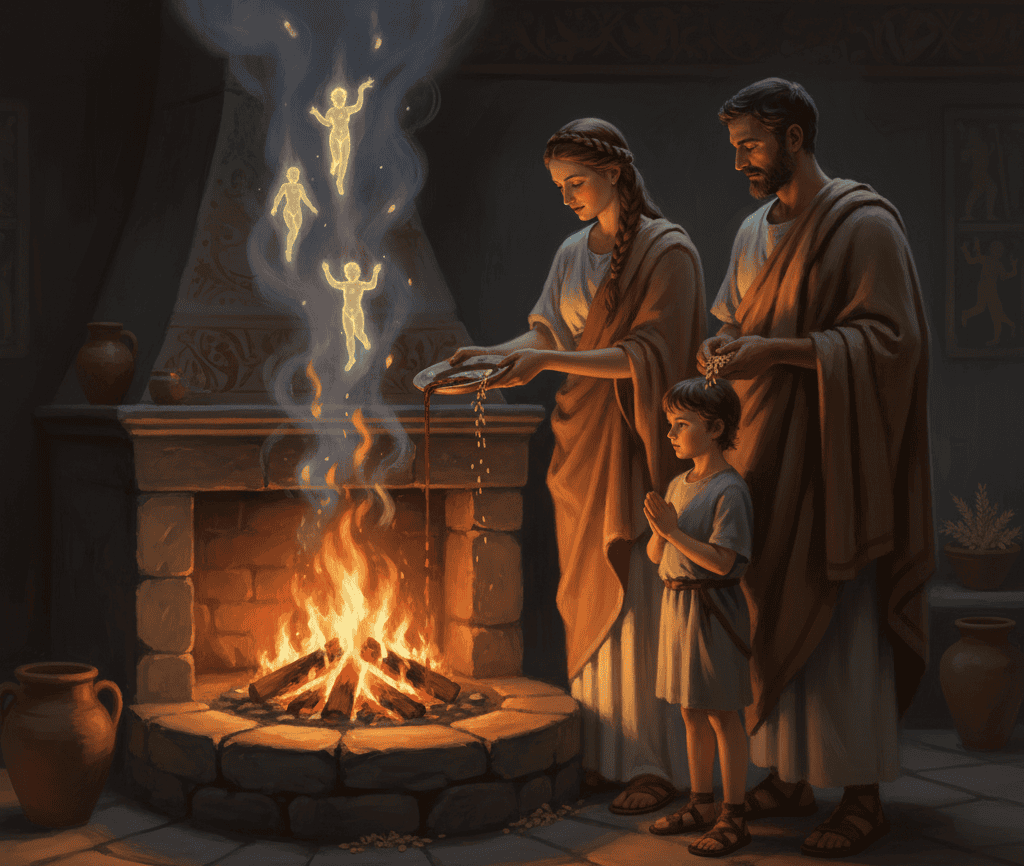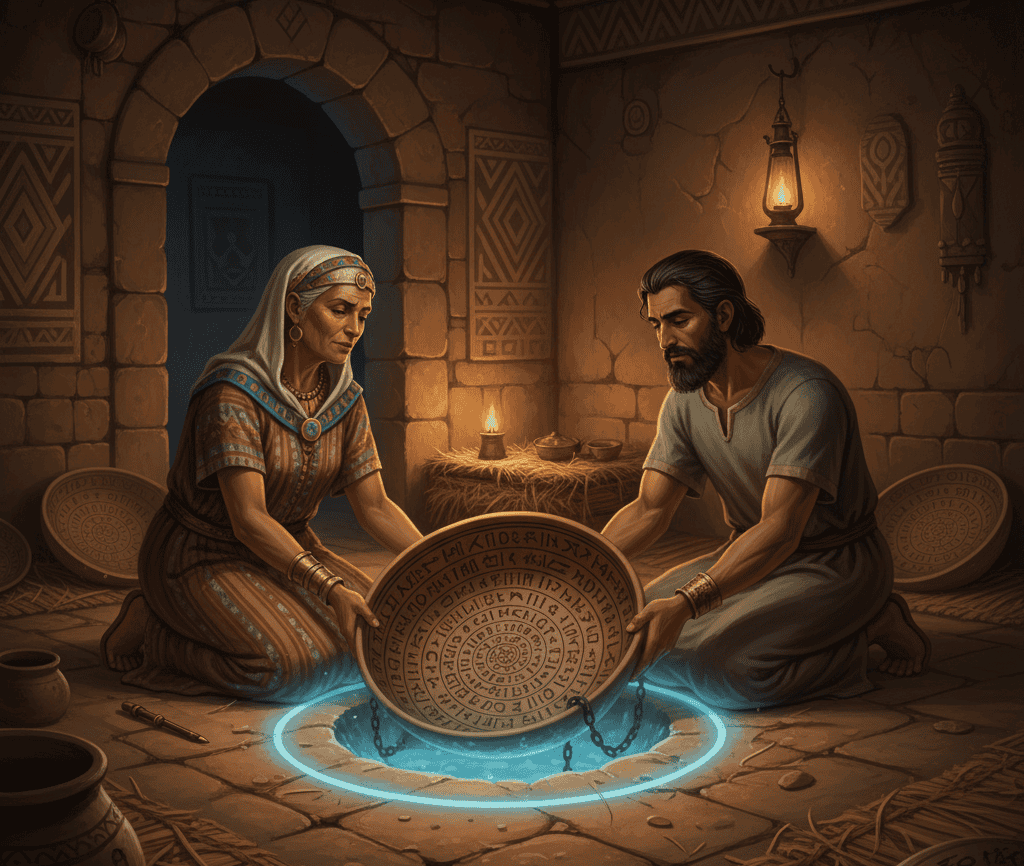Long before locks, alarm systems, or neighborhood watch groups, people relied on rituals to create a sense of protection and safety.
These rituals were both spiritual and practical, blending the visible world with the unseen.
They gave comfort against dangers that felt overwhelming, whether it was illness, hostile forces, or spirits lurking in the shadows.
Every culture had its own ways of calling on divine powers, using natural elements, or creating symbolic boundaries.
Exploring these ancient practices gives us a glimpse into how people once guarded their lives and their loved ones.
1. The Egyptian Circle of Sand
In ancient Egypt, drawing a circle was not just a doodle; it was a spiritual shield. One of the most common protective rituals involved creating a circle of sand around a person or a sacred object.
The desert was viewed as a vast and eternal force, and pulling grains of sand into a boundary meant summoning that immensity for protection.
Priests often performed this ritual before ceremonies to keep evil spirits away, but ordinary families used it too.
Parents would draw a circle around their children’s sleeping mats, believing that harmful energies could not cross the line.
Sometimes they whispered protective prayers while creating the ring, reinforcing the invisible barrier with spoken intention.
The simplicity of the circle showed that protection did not need to be elaborate; it needed focus, trust, and a bit of the earth’s raw power.
2. Roman Household Fire Offerings
The Romans were masters of ritual, and the hearth was at the heart of family safety. Flames were not just for cooking; they were sacred protectors.
Every Roman household honored its domestic gods, the Lares and Penates, by offering bits of food or drink into the fire.
Grain, salt, and drops of wine were common gifts, turning ordinary meals into moments of connection with divine guardians.
Families believed that as the fire consumed these offerings, their prayers were carried upward, forming a fiery shield around the home.
The ritual also marked transitions: before journeys, offerings were made to ask for safe passage, and upon returning, fire welcomed them back.
This daily practice reminded families that protection was not only about fortifying walls but also about nurturing a spiritual flame that burned with care and devotion.
3. Mesopotamian Incantation Bowls
In Mesopotamia, protection often came in the form of carefully written words. People inscribed bowls with spiraling texts full of incantations, prayers, and divine names.
Once finished, the bowls were placed upside down under floors, near beds, or at the threshold of a home. The idea was that spirits attempting to enter would be trapped inside the text, spiraling endlessly until they lost their power.
Some bowls even included tiny drawings of demons bound by chains, reinforcing the message that nothing harmful could pass.
Families commissioned these bowls from scribes or priests, turning their homes into quiet fortresses of language.
The ritual of burying the bowl was as important as the writing itself. By physically embedding words into the earth beneath them,
Mesopotamians created a sense of lasting safety. Protection, for them, was quite literally written into the foundation of their lives.
4. Celtic Fire Festival Shields
For the Celts, fire was more than warmth and light; it was a living shield. During Beltane, one of their great seasonal festivals, enormous bonfires were built on hillsides.
Communities gathered to lead cattle between two fires, believing that the smoke and heat would cleanse the animals of illness and misfortune.
This wasn’t just practical herd management; it was sacred protection. People also leapt over smaller fires, laughing as sparks danced into the night sky.
The ritual infused bodies with vitality and courage while creating an invisible armor against misfortune. Fire festivals were communal acts of safety, bonding people together as they faced the uncertainties of changing seasons.
For the Celts, protection was not a solitary task but a shared celebration, a reminder that safety grew stronger when nurtured collectively.
5. Greek Eye-Averting Charms
The Greeks had a particular fear of the evil eye, a harmful glare fueled by jealousy or malice. To combat it, they created charms shaped like eyes, often painted in bright blue.
These objects were worn as pendants, embedded in household walls, or carried in small pouches. Rituals sometimes involved prayers to Apollo, asking him to grant clarity and shield the bearer from envious gazes.
The charm was more than decoration; it was a mirror, reflecting negativity back to its sender.
Parents often tied small eye charms around their children’s wrists to keep them safe, and merchants displayed them at stalls to protect their goods.
Each charm carried not only symbolic meaning but also the reassurance that invisible defenses were always in place. The act of carrying one became a ritual of constant mindfulness against unseen dangers.
6. Native American Smudging Ceremonies
Across many Native American tribes, smudging was a central ritual of protection. Bundles of sage, cedar, or sweetgrass were tied together, lit, and allowed to smolder.
The smoke was then guided with a feather or hand, brushing over the body or spreading into corners of a home. The belief was that smoke absorbed negative energy and carried it away, leaving the person or space renewed and shielded.
Smudging was often performed before important events, such as council gatherings, hunts, or healing ceremonies.
It was also a way to protect emotional balance, ensuring the heart and mind were not clouded by unseen influences.
The aroma, the rhythm of the smoke, and the intention behind the act created a multisensory experience of safety. Protection here was both spiritual and emotional, rooted in harmony with the natural world.
7. Norse Runes of Defense
In Norse tradition, symbols held immense protective power. Runes were carved into weapons, jewelry, or even the wooden beams of homes.
One of the most powerful was the Algiz rune, shaped like a tree or an outstretched hand, which symbolized divine guardianship.
Rituals involved carefully carving the rune while chanting its name, binding its force to the object it marked. Sometimes blood was used to stain the rune, sealing its energy with the essence of life.
Warriors carried rune-inscribed amulets into battle, trusting them to deflect harm, while families carved them onto doorframes to keep spirits at bay.
To the Norse, protection was not passive; it was an active alignment with symbols that pulsed with cosmic energy. The act of carving was itself a ritual, transforming ordinary items into powerful shields.
8. Babylonian Water Purification Rites
The Babylonians believed water had the power to wash away evil and restore balance. Priests performed elaborate purification rituals using water drawn from rivers or wells.
During ceremonies, water was poured over statues of gods, over individuals seeking safety, or across temple thresholds. These acts symbolized cleansing both the physical body and the spiritual environment.
Sometimes herbs or minerals were added to the water, and in certain cases, the liquid was blessed under moonlight or starlight to enhance its potency.
The flow of water was seen as a movement of danger away from the self, carrying harm downstream and leaving purity behind.
For Babylonians, safety was found in flowing water, a constant reminder that renewal and protection could be summoned through the simplest of natural elements.

Sempre senti uma forte ligação com o Divino desde o meu nascimento. Como autora e mentora, a minha missão é ajudar os outros a encontrar o amor, a felicidade e a força interior nos momentos mais sombrios.









